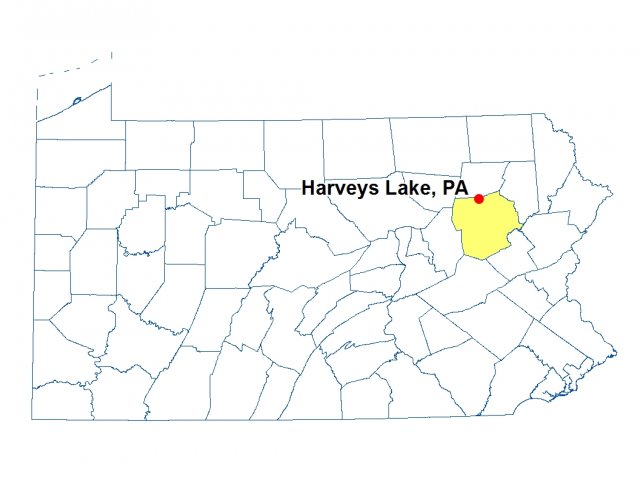Floating Wetland Islands Help Restore Large Pennsylvania Lake
Stories of Progress in Achieving Healthy Waters
U.S. EPA Region 3 Water Protection Division
Harveys Lake, Pennsylvania • May 14, 2015
One of Pennsylvania’s largest natural lakes has been removed from the state’s list of impaired waters following years of EPA-funded work to control phosphorus pollution. One of the innovative actions taken to meet the goal was deployment of five floating wetland islands.
In a community with homes and roads ringing the water’s edge, stormwater runoff was the main source of high nutrient loads to Harveys Lake in Luzerne County, prompting the state in 1996 to add it to the Clean Water Act Section 303(d) list of impaired waters. The high nutrient loads contributed to algal blooms, which impacted water quality and recreational use of the lake.
A Total Maximum Daily Load (TMDL), or pollution diet, and a stormwater implementation plan were developed to reduce nutrients by 22 percent, or 230 pounds a year, and restore the nearly 659-acre lake.
Partners involved in the restoration projects have included Harveys Lake Borough, the Harveys Lake Environmental Advisory Council, the Luzerne County Conservation District, the Pennsylvania Fish and Boat Commission, Princeton Hydro, LLC and the Pennsylvania Department of Environmental Protection (PADEP).
The partners designed and constructed two stream restoration projects and installed a series of 38 urban stormwater best management practices, including roadside swales with filter sleeves, chambered “baffle boxes,” small storm basins with removable cartridges, and other techniques to filter out pollutants. Finally, the partners launched the man-made, 250-square-foot floating wetland islands to reduce phosphorus already in the lake. Additional actions are anticipated this summer and beyond.
The wetland islands are made of recycled plastic material and covered with soil and wetland plants. The plants and the microorganisms that grow around their roots take up phosphorus and nitrogen from the water. PADEP, local volunteers and others helped assemble, plant and position the islands.
Recent PADEP surveys found that the efforts had restored water quality to state standards; the nutrient control practices so far have reduced nutrient pollution by about 10 percent of the estimated 22 percent called for in the TMDL. By the end of 2015, the phosphorus load is expected to be reduced by 132 pounds per year. The lake was removed from the impaired waters list in 2014 based on restored water quality standards and Aquatic Life Uses. PADEP staff credits the community for its instrumental role in the successful outcome.
Nearly $1.7 million in EPA Section 319 non-point source grants from 2000 to 2014 were used for the restoration actions. There were also state matching funds and earlier federal funding from the 1990s.

-
Floating Wetland Islands Part of Pennsylvania’s Lake Restoration Success (pdf)
(610.32 KB, 05/14/2015)
One of Pennsylvania’s largest natural lakes has been removed from the state’s list of impaired waters following years of EPA-funded work to control phosphorus pollution. One of the innovative actions taken to meet the goal was deployment of five floating wetland islands.

AT A GLANCE
-
Large PA lake removed from state’s impaired waters list.
-
EPA Clean Water Act Section 319 grants provide bulk of restoration funding for Harveys Lake.
For additional information, contact:
Fred Suffian
Office of State and Watershed Partnerships
U.S. Environmental Protection Agency
Region 3 Water Protection Division
1650 Arch Street
Philadelphia, PA 19103
[email protected]
